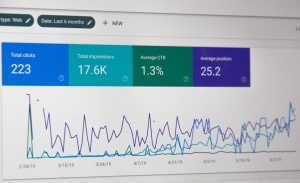Moreover, malware attacks represent another significant risk in the realm of cybersecurity. This category encompasses a variety of malicious software designed to infiltrate systems, steal data, or cause damage. Ransomware, a particularly notorious form of malware, encrypts a victim’s files and demands payment for their release, often leaving individuals and organizations in dire straits.
Understanding the various types of malware—such as viruses, worms, and spyware—can empower users to take proactive measures in safeguarding their data. By staying informed about the latest threats and employing best practices for online safety, individuals can significantly reduce their vulnerability to these pervasive dangers.
Key Takeaways
- Understanding the various cybersecurity threats is crucial for protecting your data.
- Using strong, unique passwords for all online accounts can prevent unauthorized access to sensitive information.
- Regularly updating software and operating systems is essential for maintaining data security.
- Encryption is a powerful tool for protecting sensitive files and communications from unauthorized access.
- Regularly backing up important files and documents can help recover from a data loss incident.
Implementing Strong Passwords: One of the most fundamental yet effective strategies for protecting your data lies in the implementation of strong, unique passwords across all online accounts. A robust password acts as the first line of defense against unauthorized access, making it significantly more difficult for cybercriminals to breach your digital fortress. To create a strong password, it is essential to incorporate a mix of uppercase and lowercase letters, numbers, and special characters while avoiding easily guessable information such as birthdays or common words.
Additionally, using a different password for each account ensures that if one password is compromised, the others remain secure. This practice not only enhances security but also minimizes the risk of a domino effect in the event of a breach.
Furthermore, utilizing password managers can greatly simplify the process of managing multiple strong passwords. These tools securely store and generate complex passwords, allowing users to focus on maintaining unique credentials without the burden of memorization. By adopting this approach, individuals can significantly bolster their cybersecurity posture while reducing the likelihood of falling victim to credential stuffing attacks—where hackers use stolen passwords from one site to gain access to accounts on other platforms.
In an age where cyber threats are increasingly sophisticated, prioritizing strong password practices is an essential step toward safeguarding sensitive information.
Keeping Software Updated: The importance of regularly updating software and operating systems cannot be overstated when it comes to maintaining data security. Software developers are continually working to identify and rectify vulnerabilities that could be exploited by cybercriminals. When updates are released, they often include critical patches designed to address these security flaws.
Failing to install these updates in a timely manner can leave systems open to attacks that exploit known vulnerabilities. By establishing a routine for checking and applying updates—whether through automatic settings or manual checks—users can significantly enhance their defenses against potential threats.

In addition to operating systems and applications, it is equally important to keep antivirus and anti-malware software up to date. These programs rely on databases of known threats to detect and neutralize potential dangers before they can inflict harm. Regular updates ensure that these databases remain current, providing users with the best possible protection against emerging threats.
By committing to a proactive approach in keeping software updated, individuals and organizations can create a more resilient cybersecurity environment that is better equipped to withstand the ever-evolving landscape of cyber threats.
Utilizing Encryption: Encryption serves as a formidable tool in the arsenal of data protection strategies available today. By converting sensitive information into an unreadable format that can only be deciphered with a specific key or password, encryption ensures that even if data is intercepted or accessed without authorization, it remains secure and inaccessible to unauthorized parties. This is particularly crucial for sensitive communications—such as financial transactions or personal correspondence—where confidentiality is paramount.
Implementing encryption protocols not only protects individual privacy but also fosters trust between businesses and their clients.
| Data Protection Strategy | Encryption |
|---|---|
| Key Benefit | Converts sensitive information into an unreadable format |
| Security Measure | Ensures data remains secure and inaccessible to unauthorized parties |
| Importance | Crucial for sensitive communications, such as financial transactions or personal correspondence |
| Privacy Protection | Protects individual privacy and fosters trust between businesses and their clients |
Moreover, encryption is not limited to communications; it can also be applied to files stored on devices or in the cloud. By encrypting sensitive documents before storing them online or on local drives, users can add an additional layer of security that mitigates the risks associated with data breaches or unauthorized access. As cyber threats continue to evolve in complexity and sophistication, leveraging encryption becomes increasingly vital for safeguarding sensitive information.
In an era where data privacy is under constant threat, embracing encryption as a standard practice is essential for anyone looking to protect their digital assets.
Backing Up Your Data: In the unfortunate event of a cybersecurity breach or data loss incident, having a recent backup of your data can prove invaluable. Regularly backing up important files and documents ensures that you have a safety net in place should your primary data become compromised or inaccessible due to ransomware attacks or hardware failures. There are various methods for backing up data, including cloud storage solutions and external hard drives, each offering its own set of advantages.
Cloud storage provides the convenience of remote access and automatic syncing, while external drives offer physical control over your data.
Establishing a consistent backup routine is crucial for maximizing data protection. This could involve scheduling automatic backups at regular intervals or manually backing up files after significant changes or updates. Additionally, it is wise to maintain multiple copies of backups in different locations—both on-site and off-site—to further safeguard against potential disasters such as fires or floods.
By prioritizing data backups as part of an overall cybersecurity strategy, individuals and organizations can ensure that they are well-prepared to recover from any unforeseen incidents that may threaten their valuable information.
Educating Yourself and Your Team: Cybersecurity is not solely the responsibility of IT departments; it requires a collective effort from everyone within an organization. Educating yourself and your team about best practices for protecting data is essential in fostering a culture of security awareness. This education should encompass various topics, including recognizing phishing emails, understanding the importance of strong passwords, and knowing how to safely navigate public Wi-Fi networks.
By equipping employees with this knowledge, organizations can significantly reduce their vulnerability to cyber threats that often exploit human error.

Moreover, ongoing training sessions and workshops can help reinforce these concepts and keep cybersecurity at the forefront of employees’ minds. Regularly updating training materials to reflect emerging threats ensures that staff members remain vigilant against new tactics employed by cybercriminals. Encouraging open communication about cybersecurity concerns fosters an environment where employees feel empowered to report suspicious activities without fear of repercussions.
Ultimately, investing in education and training not only protects sensitive data but also cultivates a proactive approach to cybersecurity that benefits the entire organization.
Seeking Professional Help: In an increasingly complex digital landscape, seeking professional cybersecurity assistance can be a game-changer for both individuals and businesses alike. Cybersecurity consultants bring specialized knowledge and expertise that can help identify vulnerabilities within existing systems and recommend tailored solutions for enhancing security measures. Whether it’s conducting thorough risk assessments or implementing advanced security protocols, professional guidance can provide invaluable insights that may not be readily apparent to those without extensive experience in the field.
Additionally, investing in reputable antivirus software or comprehensive security suites can further bolster defenses against cyber threats. These tools often come equipped with features such as real-time scanning, firewall protection, and intrusion detection systems designed to safeguard against various types of attacks. For businesses with limited resources or expertise in-house, partnering with managed security service providers (MSSPs) can offer ongoing support and monitoring services that ensure continuous protection against evolving threats.
By recognizing the value of professional assistance in navigating the complexities of cybersecurity, individuals and organizations can take significant strides toward safeguarding their data in an increasingly perilous digital world.
For those interested in understanding more about the policies that govern the use of websites and how they manage user data, particularly in the context of cybersecurity, the “Terms of Use” page on many websites provides crucial information. For instance, you can explore the Terms of Use at Bongoc’s Terms of Use page. This page outlines the legal agreements between the service provider and the users, including data protection measures and user responsibilities, which are essential components in maintaining cybersecurity standards.
FAQs
What is cybersecurity?
Cybersecurity refers to the practice of protecting systems, networks, and programs from digital attacks. These attacks are aimed at accessing, changing, or destroying sensitive information; extorting money from users; or interrupting normal business processes.
Why is cybersecurity important?
Cybersecurity is important because it encompasses everything that pertains to protecting our sensitive data, personally identifiable information (PII), protected health information (PHI), intellectual property, data, and governmental and industry information systems from theft and damage attempted by criminals and adversaries.
What are some common cyber threats?
Common cyber threats include malware, phishing, ransomware, denial-of-service attacks, and insider threats. These threats can lead to data breaches, financial loss, and damage to an organization’s reputation.
How can individuals protect themselves from cyber threats?
Individuals can protect themselves from cyber threats by using strong, unique passwords, enabling two-factor authentication, keeping software and systems updated, being cautious of suspicious emails and links, and using reputable antivirus software.
How can organizations improve their cybersecurity measures?
Organizations can improve their cybersecurity measures by implementing a comprehensive cybersecurity strategy, conducting regular security assessments, providing employee training on cybersecurity best practices, and investing in advanced security technologies such as firewalls, intrusion detection systems, and encryption.
















